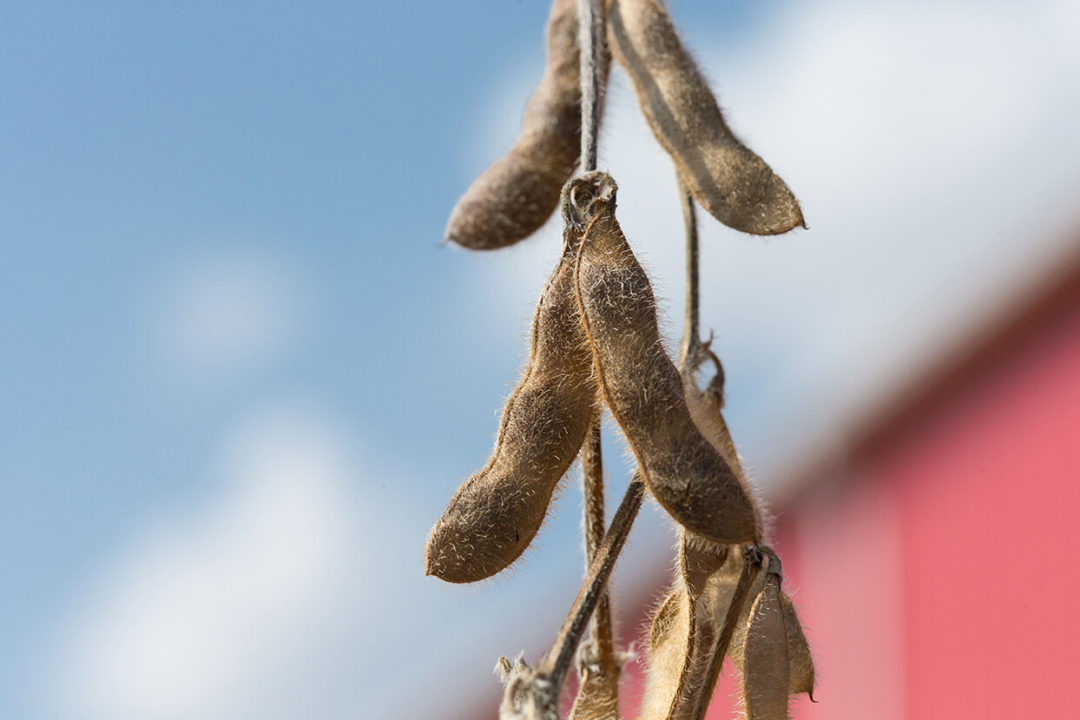Daily Dicamba Update: Dicamba-Tolerant Crops: A Development Opportunity or a Debacle?
The 2017 growing season demonstrated that the new dicamba-tolerant crops have good tolerance (genetics) and dicamba is an excellent broadleaf weed herbicide. Wide acceptance of the technology indicates a sizeable need to control glyphosate-resistant weeds. However, the new low volatility formulations with the anti-drift regulations included on the label have led to what many see as an environmental disaster. Regardless of who blames who or what, the fact is that around 3.6 million acres of soybeans were affected by dicamba “off target” movement in 2017, according to Kevin Bradley at the University of Missouri.
The issue is that the agronomics systems required to apply dicamba over large acreages have not yet been developed. If this new technology is going to succeed, it will take localized development. Local agronomists and growers will have the task of taking the environmental data generated for the new dicamba formulations and integrating it for safe use in local agronomic systems.
The next step should be the realization that what we thought we knew about dicamba’s environmental profile is not only incomplete but inaccurate. New approaches to understanding drift, volatility at application, and volatilization events post application will have to be developed and then integrated into the local climate and agronomic systems.
This development will have to take place with a growing glyphosate-resistant weed problem in the background. A recent survey by Straus Ag suggests that around 70-75% of corn, soybeans, and cotton growers have glyphosate-resistant weeds in their fields, up some 15% in one year. The resistance tends to be with broadleaf weeds, which are heavy seed producers, and are openly pollinated with a lot of genetic variability. This means the need for better broadleaf weed control, including broadleaf herbicides, is going to increase.
Herbicide drift is reasonably well understood. Small droplets less than 200 microns can evaporate quickly, and move away from the target on air currents. A five-micron droplet can move up to three miles. A 200 micron drop can move about 30 feet and a 400 micron drop moves about 8 feet. A 1,200 micron drop does not move much. The new low volatile dicamba formulations such as XtendiMAX and Engenia with their label requirements put the spray droplets into the 1,200 micron size category. However, the droplet surface area to leaf surface area is so low that uptake and the performance of most post applied herbicides is decreased. The optimum size spray droplet for the performance of these herbicides is 200 to 500 microns. Thus, many growers use higher rates of dicamba to ensure performance.
Another issue is that most of the drift reduction agents (DRA) approved on the new dicamba formulation labels are polymer type drift reduction agents. These DRA’s are thickeners and can undergo polymer shear, breaking into smaller pieces, when recycled through the pumps that keep the spray mix agitated. Polymers work well when spraying on the first half of the tank but pump shear will cause them to be non-functional as the last part of a spray mix is used. This may be a cause for unexpected increases in spray drift.
The likely culprit for the increase in dicamba off-target movement is volatility. Most research to date suggest that spray drift is more important that vapor drift; however, the 2017 experience strongly suggest that volatilization is extremely important.
There appears to be two types of volatility: One that occurs on the day of application. The other is a volatilization event triggered by environmental factors that occur sometime after the original application. Factors we know that increase the risk of dicamba volatilization include higher use rates, higher temperatures, ammonium sulfate in the spray mixture, and lowering the pH of the spray mixture. Higher use rate will increase the amount of dicamba available to volatilize. Higher temperatures at application will also increase dicamba volatilization. Dicamba likely should not be sprayed at temperatures above 75 F. The addition of ammonium sulfate to the spray solution increases dicamba volatility. Lowering the pH of the spray solution will generally increase dicamba volatility. These generalizations are factors associated with dicamba volatility on the day of application.
The low volatile formulations XtendiMAX, Engenia, FeXapan, and Tavium, plus volatility reducing adjuvants such as Vapor Lock and Cado MAX have been shown to reduce volatility on the day of application. The original thought was that this was the critical time for dicamba volatility and these products worked well. However, the experience in 2017 indicates that the real misunderstood part of off-target dicamba movement is that volatility events can occur for days after application. There is mounting evidence that volatilization events can occur up to four days, if not longer, after application.
There is little known about these types of volatilization events. Our ability to understand these later volatilization events and the development of agronomic systems to mediate these events are the key to the long-term utilization of this technology.
The real unknown is the interaction between water, the micro-environment, and dicamba volatilization. Volatilization at application is generally considered higher than post-application volatilization events. Current data suggests that dicamba volatilizes off the leaf surface at a higher rate than the soil surface indicating that an organic (uncharged surface) with moisture increases volatility.
Our recent research has shown that dicamba volatility is greatly increased with higher water volume. Indicating that larger spray droplets with longer drying times can increase the amount of dicamba vapor injury dramatically. Another interesting finding is that re-wetting spray droplet will cause another dicamba volatility event.
Rainfall after application has been shown to stop dicamba volatilization. Likely, rain-washes the dicamba off the vegetation and into the soil where dicamba becomes tied up. If true, it would follow that volatilization events that occur days after the application are driven from a water surface before dicamba penetrates the soil. That moisture would either be on the leaf surface or the soil surface. Understanding the wet-drying events and the interaction with higher temperatures is likely the key to post application volatilization events.
Future development for this technology should be focused on post-application volatilization events. Growers and agronomist should document conditions at application and follow field conditions for a week to 10 days after application. Use rate, air temperature, soil temperature, relative humidity, moisture on the crop, moisture on the soil surface, rainfall, and an estimation of relative drying time should be recorded. This will build a database of agronomic conditions that can be correlated to off-target movement of dicamba. Precision agriculture should be a key tool in determining the environmental conditions that lead to dicamba volatility.
Researcher should be looking at surface volatilization and interactions with water. Does dicamba volatilize more from a dry surface or a wet surface? Are subsequent wetting events such as a heavy dew, not enough water to wash the dicamba into the soil but enough water to put dicamba into a water solution, important?
What are the factors that seem to diminish the low volatility technology of the new dicamba formulations over time? Can volatility reduction systems be built that reduce volatility with later volatilization events? Does the net movement of water into the soil reduce volatility? Does the net movement of sub surface soil moisture to the soil surface increase dicamba volatility?
These are the questions that need to be answered if we are to develop agronomic systems and dicamba formulations that make dicamba a useful and safe tool for growers to use.






